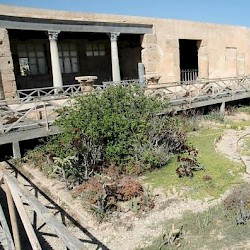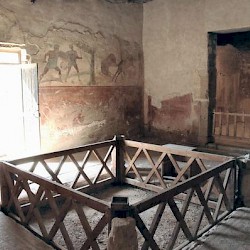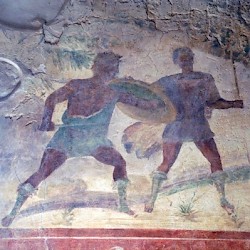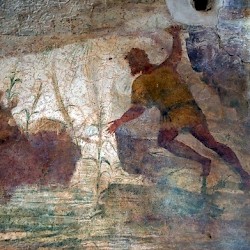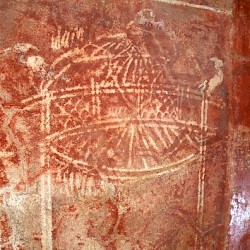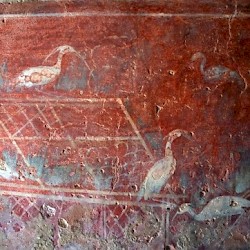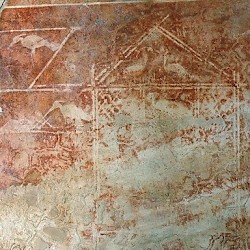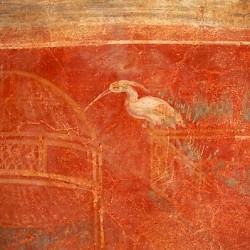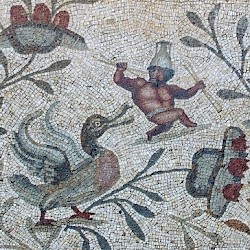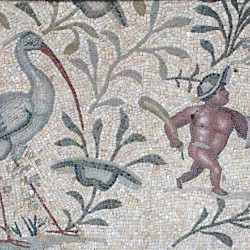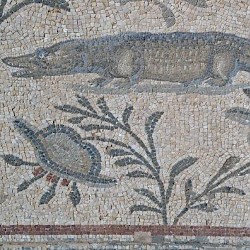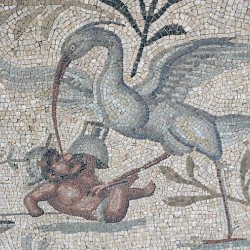Villa Selene
Q310381Villa Selene: Roman villa on the Mediterranean shore, not far from Lepcis Magna.

The Villa Selene ("House of the Moon"), at the mouth of the Wadi Yala close to modern Homs, is best known for its splendid mosaics. It is believed that its ancient name can still be recognized in the name of a modern village, which is called Silin. This splendid ancient mansion, no doubt the residence of a very wealthy family, is at about three, four hours' walking distance to the west to Lepcis Magna.
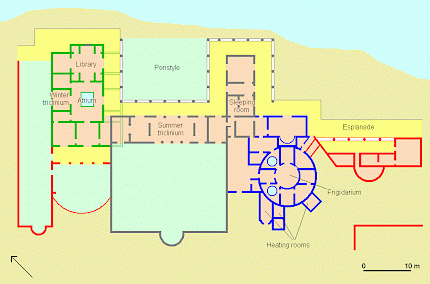
The villa consisted of several independent parts:
- an atrium house that might as well have stood in Italy (indicated on the map in green); here, one could find a library and the winter triclinium (dining room);
- an expansion surrounding a peristyle (garden with colonnade), where one could also find the summer triclinium (grey);
- several garden structures (red),
- a bathhouse (blue).
The various elements were connected by a magnificent portico with mosaics. To build it, a part of the atrium house had to be leveled. The complex appears to have been created in the second century CE but the atrium part must have been older.
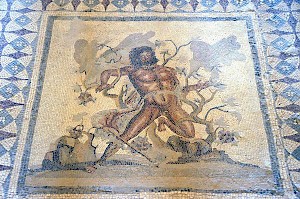
Like the Villa Dar Buc Ammera, Villa with the Mosaics of the Nile, and the Villa Orpheus, there are mosaics with mythological scenes on the floors. The photo to the right shows a mosaic from the winter triclinium, deep inside the atrium part of the complex. It represents the story of Lycurgus and Ambrosia. The latter was one of the Hyades, the women who nurtured the god Dionysus; when Lycurgus tied to catch them, they fled to the sea, except for Ambrosia, who evaded rape because she changed into a vine.
In another room in the atrium house, you will see a famous mosaic of a circus. It has been identified with the Circus of Lepcis Magna. In front, you can see the starting boxes, with open doors: the race has begun. There are many chariots and horses, and you can see the spina, decorated with all kinds of monuments. The second photo below shows an interesting detail: a man who operates an instrument to show how many laps the jockeys still have to run. A normal race had seven laps, and four have been already been finished: four balls (or "eggs", as they were called) are already down, and the man is about to take the fifth one down. The dolphins to the right have the same function.
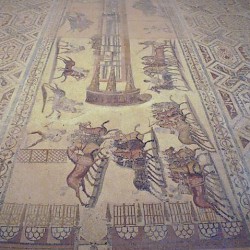 Villa Selene, mosaic of the hippodrome |
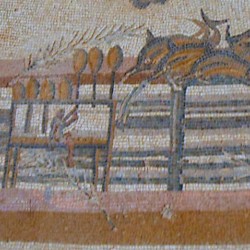 Villa Selene, Mosaic of the hippodrome |
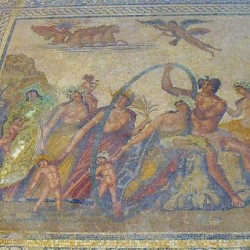 Villa Selene, Mosaic of the Four Seasons |
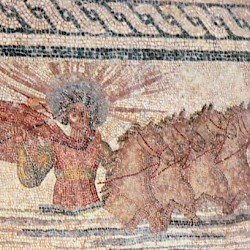 Villa Selene, mosaic of the Four Seasons, Helios |

In yet another room, we can see a mosaic that represents the four seasons: four ladies with four children represent (cf. the mosaic at the Dar Buc Ammera villa). The man to the right is Aion, "eternity", carrying a great hoop: the zodiac. Top left, we can see Helios, the sun god, arising with his chariot from the eastern Ocean.
The portico surrounding the peristyle was decorated with mosaics that show beautiful geometric figures. The photo to the right shows is the southeastern ambulatory. The southwestern part, which is in front of the summer triclinium, was decorated with Nilotic figures. We can see a fierce-looking crocodile, some vegetation, and pygmies fighting against ibises (or ill-depicted cranes). The little men are dressed like gladiators, but instead of helmets, they have a flower, and instead of a shield, a broken amphora. This was a common motif in ancient art, that can also be found in theVilla Dar Buc Ammera., and the Villa of Neptune Mosaic in Italica, Spain.
The central building (grey on the map above), situated between the old atrium house and the bathhouse, has several rooms, all decorated with lovely mosaics. The one about Amphitrite, the spouse of the god of the sea Neptune, is probably the finest of all. This is of course a very normal decoration in a villa situated on the shores of the sea. Its small stones are about 2 mm large and one wonders if this mosaic does not betray child labor.
In the another room om this part of the villa comples, we find this mosaic: people are performing acrobatic stunts on the back of a bull. Two people are thrown off. This murderous game must have been staged in the circus of Lepcis Magna. Next to it, we find a bedroom with finely stuccoed wall paintings.
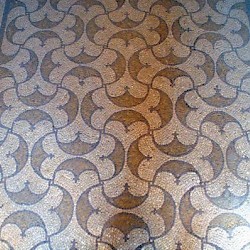 Villa Selene, Mosaic of Amphitrite (2) |
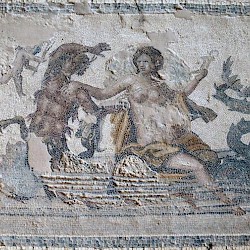 Villa Selene, Mosaic of Amphitrite (2) |
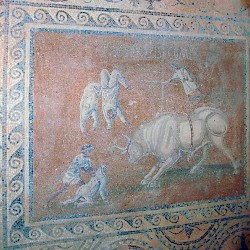 Villa Selene, Mosaic of the acrobats |
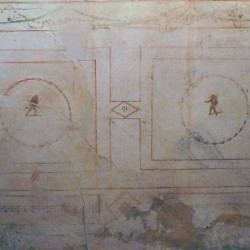 Villa Selene, Bedroom, wall painting |
The Villa Selene was discovered in 1974. Forty-six rooms have been excavated, but not everything has been uncovered yet. This splendid house, the Villa Nile, the Villa Orpheus, and the Dar Buc Ammera villa are just three of the many resorts along the shore. There were many more, covering the entire area from Tripoli (ancient Oea) to Misurata. Some were once founded as atrium houses, perhaps by Italian settlers, but the main construction phase was in the second century.
